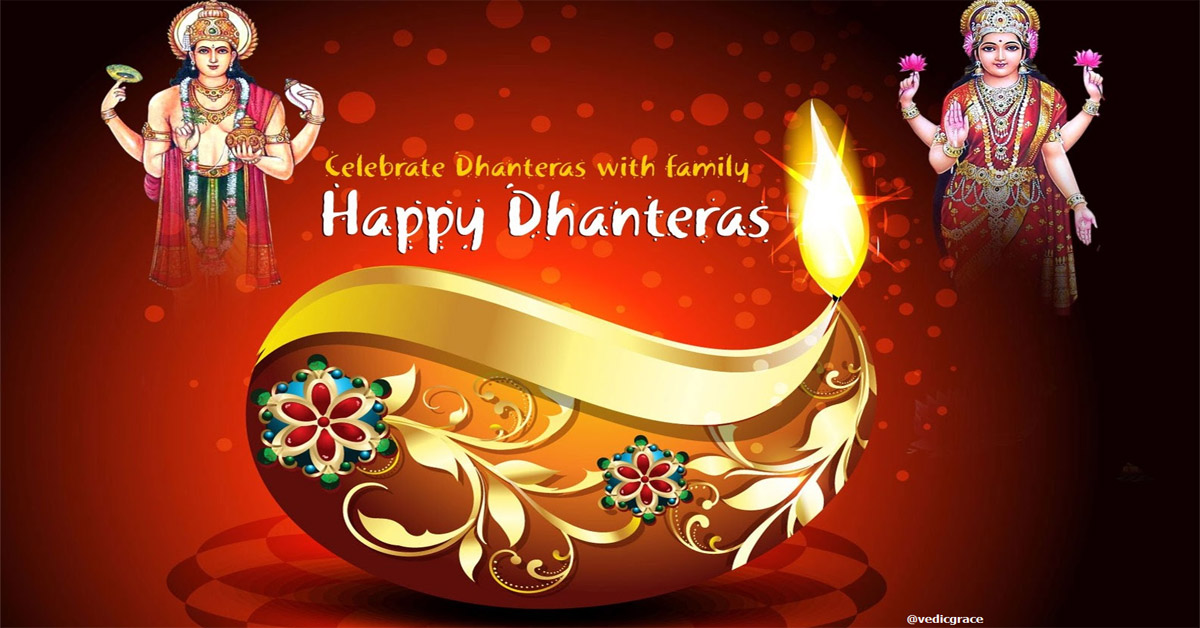
Dhanteras festival is celebrated every year on Kartik Krishna Trayodashi. This day is also considered the day of Kubera and it is worshiped for wealth. On this day people buy new utensils and jewelry along with precious metals.
Dhantrayodashi and Dhanteras are also called this day. This day is basically a festival celebrating the birth of Dhanvantari, the founder of Ayurveda, and Kubera, the god of wealth. On the day of Dhanteras, there is a tradition of shopping for new utensils and gold and silver jewelry in the Terai region of Nepal and all over India.
In that area, all the people of the upper, middle, or lower classes of society wait for this special day throughout the year for shopping for some important items of their needs and luxuries. There is no definite evidence as to when and how the reference to shopping in this way started during this festival, but the outbreak of Dhanvantari was due to the churning of the sea and when he was born, he came with an urn full of nectar in his hand, so this day was considered auspicious for shopping for utensils.
In mythological sagas, the birth of Dhanvantari appears to be associated with the churning of the sea by gods and demons. Dhanvantari originated during the churning of the sea. He first appeared with an urn full of nectar in his hands. That is why his other name is 'Piyushpani Dhanvantari'. He is also considered an avatar of Lord Vishnu.
Apart from that, according to tradition, on the evening of Dhanteras, a lamp is placed in the main door of the Bali house to mark Yamraj, he is requested and worshiped not to enter the house and not to cause suffering to anyone. This religious belief is related to the health and longevity of the common man. There is a folk tale associated with the Dhanteras festival which is celebrated every year at the beginning of Tihar.
According to this, once King Himalaya, while getting his son's birth chart made, learned from an astrologer that his son would die of a snake bite on the fourth day of his marriage. The marriage took place, but when Himalaya's daughter-in-law came to know about this, she thought of freeing her husband from the wrath of Yamaraj by any means possible.
On the four days before the wedding, she made a pile of all the ornaments of the house outside her husband's room and built a stove as high as a mountain. At night, Yamaraj took the form of a snake and came to that place with the idea of ââbiting the son of Himalaya, but he could not cross the mountain of Gahanaguria, just like a snake, Yamaraj reached the top of that pile, but when he got there, he was very tired and had to stop. While he was singing, the sweet songs and bhajans sung by the princess echoed in his ears, hearing which he was mesmerized. Listening to those songs, bhajans and stories lit up.
The next morning, Yamaraj, who came there in the form of a snake, had to return empty-handed. Thus the princess saved her husband's life. After this incident, people light a lamp outside their houses on the evening of Dhan Trayodashi for the longevity, health, and happiness of their family members.
The symbolic meaning of this action is family happiness and good health. In our Aryan culture, health is considered more important than wealth, so in this festival associated with the worship of Lakshmi, the goddess of wealth and prosperity, Yamraj is worshiped first. There is also a tradition of buying gold and silver utensils, coins, ornaments, etc. on the day of Trayodashi of Kartika Krishna Paksha called Dhanteras. Nowadays, it is customary to wait for this day to buy luxury items like automobiles, mobiles, and computers.
It seems that this 'Dhanteras' festival, which has become associated with customs and traditions, is also associated with the protection of financial investments. It also seems to show economic status and ability, on the one hand, upper and middle-class people try to increase their happiness by buying luxury items on Dhanteras day, while on the other hand, poor and lower-class people celebrate this festival by buying their needs and necessities.
Festival




